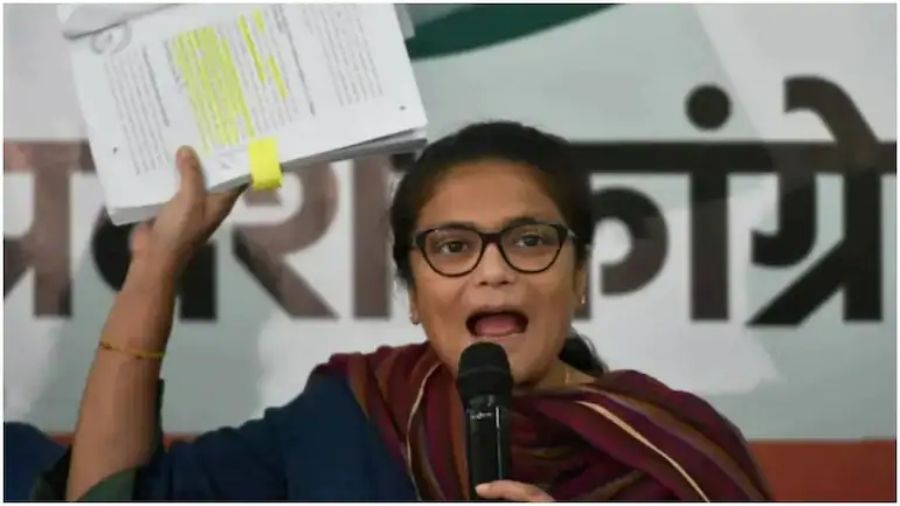 |
| Manikant Azad at his office in Ranchi. Picture by Hardeep Singh |
In the past three months, silk production in the state has increased a whopping 30 tonnes.
The man who has spearheaded the mission is none other than the director of handloom, sericulture and handicraft directorate, Manikant Azad.
Azad, originally a Bihar-cadre IAS officer, was given the responsibility of achieving the target ? 600 tonnes of silk in five years ? set by the state government three months ago.
Azad, credited with a number of initiatives in the otherwise moribund directorate, has started active coordination with organisations like the National Institute of Design (NID), Ahmedabad, and National Institute of Fashion Technology (NIFT), Calcutta, to arrange for the right platform for khadi, silk and handicraft products of Jharkhand.
For Azad, who has served as deputy commissioner of districts across Bihar and Jharkhand, literacy and education at the grassroots level is important for a society?s improvement.
Araria district of Bihar received the national award for substantially improving literacy rates among women due to an intensive project initiated by Azad, the then deputy commissioner of the district.
Azad, who has an inclination for writing, spoke to S. Shekhar on the plans for revival of the handloom, handicraft and sericulture sector.
The Central Silk Board chairman, H. Hanumanthappa, had criticised the state government four months ago for not being able to utilise funds sent by the Centre for the sericulture sector. How far have things improved?
That?s a closed chapter, as the state has now taken up the sericulture sector with all sincerity. We plan to increase the current silk production from 120 tonnes (as in the last week of November) to 648 tonnes in five years time. For this we need a strong financial support from the Centre.
Apart from imparting training to 1,200 farmers, who will propagate the correct concept of sericulture in rural areas, we are researching on how silk production can be improved in every district.
The farmers, christened as ?resham doots?, are being provided with free training in our training centres located in districts. We are coordinating with the state-run Silk Development Institute at Hehal and Technological Silk Development Institute in Chaibasa. National Institute of Fashion Technology (NIFT), Calcutta, has also been roped in to help us finding markets for the silk products manufactured here.
Has any specific programme been launched for the purpose?
Yes, we have launched a drive, the Catalytic Development Programme (CDP). With a focus on each district, we are concentrating on both the tussar and Mulberry varieties of silk in coordination with the forest department.
As for now we have realised that planting of Arjun and Asan trees ? the varieties where silk moths usually breed ? on the fringes of forests can attract villagers to sericulture. We are also attracting NGOs to the drive.
There were talks that the state was not provided space by the Centre to set up an emporium in Delhi although other states have been provided so.
As Jharkhand is a new state we cannot share a space with Bihar to promote our crafts in Delhi. We are about to be allotted a space at Baba Kharag Singh Marg to set up an emporium, which got delayed due to a lot of technical reasons, not by the Centre intentionally. As the problems have been sorted out, I want the emporium set up and running as soon as possible.
How about the handicrafts sector? Isn?t there a project of ?Urban Haats? to be set up exclusively for selling handicrafts?
Work has begun in the five centres, each in Ranchi, Hazaribagh, Giridih, Seraikela and Deoghar districts. The Deoghar centre ? developed at a cost of around Rs 2 crore and like other centres ? is almost complete with 80 per cent of the work been done. We are not just setting up ?Urban Haats? but concentrating on each and every handicraft item, from clay and brass items to stone sculptures. We have also consulted the National Institute of Design (NID), Ahmedabad, to suggest ways to improve the sector.
Do you think the people of the state will take up making handicrafts as a profession?
There are tribes in Jharkhand who have been associated with making of handicrafts for a long time. We have never had a dearth of artisans and the state government will do all that it can to support such people.
From next year onwards, we will begin awarding six artists, including three tribals, who have shown exemplary achievement in the respective fields.
What about the weavers? Many of the weavers? cooperatives have been dying a slow death in absence of government support.
The situation has improved from the Bihar days. We have 162 weavers? cooperative societies with around 15,000 members. We have been taking steps to revive such societies and in helping weavers in sustaining themselves and facing tough competition. We plan to coordinate with agencies that will provide a modern touch to the clothes manufactured here. To protect the interests of weavers we have introduced health packages, insurance and provident fund schemes for them.











